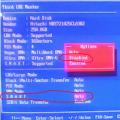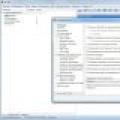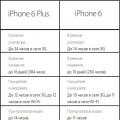instructions to the user (a difficult task, if only because the hardest thing is to get them to read these instructions). Any time a system needs to make it easier for the user to work with an interface by providing information (for example, when the user has just started working with the site or made a mistake), this is an information design task.
Navigation design
Navigation design seems simple: all you need to do is place links on each page so that the user can navigate the site. However, if you look a little deeper, the challenges of navigation design become apparent. The navigation design on any website must simultaneously solve three problems:
First, it must provide users with a way to get from one point on the site to another. Since in many cases it is impossible to connect each page with all the others (and even if it is possible, it is unreasonable for general reasons), it is necessary to select navigation elements so that they simplify the actual movements of the user; Among other things, this implies that the links must be working.
Second, navigation design must reflect the relationships between internal navigation elements. Simply providing a list of links is not enough. How do these links relate to each other? Are some more important than others? What's the difference between them? This information is necessary for the user to understand what choices he has.
Third, the navigation design should reflect the relationship between the content of the navigation elements and the page that is in front of the user. What does all this pile of links have to do with the page I'm looking at right now? This information will help the user understand what choices he can make.
Navigation design |
should be done to best achieve his goal or solve the problem at hand.
When navigating in physical space, a person can rely to a certain extent on an internal sense of direction. (Of course, there are also people who always feel lost.) However, the mechanisms of our brain that help us find our way in the physical world (“hmm ... I think the door through which I entered is somewhere behind and to the left”) , are completely useless when finding a way in the information space.
That's why it's vital that every page on a website clearly communicates to users where they are on the site and where they can go. The question of the extent to which users can navigate information spaces is still controversial to this day. Some experts zealously defend the point of view that when visiting websites, users build small maps in their minds, like when visiting a supermarket or library; others argue that users rely almost entirely on the navigational cues in front of them, as if every step they take on the site is instantly erased from their memory.
We still don't know how (or to what extent) users represent the structure of a website in their minds. Until we figure this out, it's best to assume that users don't remember anything as they move from one page to another. (After all, if a public search engine like Google indexes your site, the entry point to your site could be any page.)
Most sites actually provide the user with several navigation systems, and each plays a role in orienting the user to the site in different circumstances. In practice, several types of navigation systems have been developed.
Global navigation provides access to a significant part of the site. The term "global" here does not mean

that this navigation must appear on every page of the site - although this would not be a bad idea. (We will call navigation elements that are present on all pages of the site “persistent”; it should be remembered that permanent elements are not always global.) In fact, global navigation is a set of entry points that users need to navigate from one “ end" of the site to another. You can (one way or another) get to any place on the site that you need using global navigation.
Global
navigation
Local navigation provides users with access to the “closest” elements of the architecture. In a strictly hierarchical architecture, local navigation can, for example, provide access to the parent page, child pages, and neighbor pages. If your architecture is structured according to how users imagine site content, local navigation tends to be more popular than other navigation options.
Local
navigation

Navigation design |
Additional
navigation
Additional navigation provides faster access to content related to the current page that may not be directly accessible through global or local navigation. This type of navigation design has the benefits of a faceted layout (it allows users to shift the focus of their exploration to other content elements without having to return to the starting point), but it also allows the site to maintain a primarily hierarchical architecture.
Contextual navigation embedded directly into the page content (and therefore sometimes called micronavigation). This type of navigation (for example, hyperlink
V text on the page) is often underused (if not completely incorrect). Often, users decide that they want another piece of information while reading text on a page. Why not put the corresponding link directly
V text, without forcing the user to scan the page up and down in search of the necessary navigation element (or, worse, drop everything and contact the search engine)?
Contextual
navigation

Returning to the strategy level topic, the better you know your users and their needs, the more effective the contextual navigation you deploy will be. If your users don't get obvious support from contextual navigation to work on their tasks and achieve their goals (for example, your text is crammed with so many hyperlinks that users simply can't figure out which ones apply to their needs), they will It's fair to see it as trash.
Service navigation provides access to elements that the user does not need on a daily basis, but which are usually provided for the sake of his convenience. For example, in the real world, store doors usually have opening hours posted on them. For most shoppers, the lion's share of the time, this information is of no value: standing next to it, anyone can easily figure out whether the store is open now. However, knowing that this information is readily available helps the buyer who suddenly needs it. Links to contact information, feedback forms, and site policy statements are common elements of service navigation.
Service
navigation
Some navigation aids are not built into the structure of the pages, but exist independently of the content and functions of the site. These are the tools remote navigation, which users turn to when they are confused in the other navigation tools you provide
Environment design
http://www.omnibusdesign.ru/space_design/
http://www.indexmarket.ru/products/?content=item&id=1836
http://architektonika.ru/2008/01/15/gorodskaja_sreda_v_strukture_reklamy.html
The environment in which a consumer encounters your brand, be it the entrance to a bank branch, a retail outlet, or a sales office, becomes an integral part of your brand image. Interesting and bright solutions for navigation, interiors, and exteriors, closely related to the visual image of the company, are an effective means of influencing the audience, strengthening the brand and increasing its memorability.
Environmental design is a complex, multifaceted creative process. In addition to designers, marketing specialists, architects, engineers, and ergonomic specialists are involved in this work. Experience and knowledge in the field of production technology of various designs allows us to offer convenient and practical solutions taking into account cost and production constraints.
Design of visual navigation systems
Environmental design projects often involve creating a visual navigation system. This system is created taking into account the scale and purpose of the room. The navigation system should harmoniously complement the interior of the room, becoming its “graphical interface”, in fact, the language in which the room communicates to its visitors the information necessary for orientation in a space, sometimes large and dense. The system should give visitors the feeling that they are in a modern and interesting, and most importantly, understandable and hospitable world. To develop a navigation concept, a comprehensive study of the characteristics of the premises, forecasting and analysis of the behavior and movement of visitor flows is required.
Often in the process of creating a visual navigation system, a set of icons is developed. A pictogram is a simple graphic image that succinctly illustrates a certain object or concept, in our case, a functional part of the room. The purpose of a pictogram is to convey information in a shorter, faster, clearer, more effective way than a word. A good pictogram system is characterized by a unity of style and strict adherence to a set of graphic rules and the philosophy underlying it.
The graphic, font, and color solutions of navigation elements and icons are based on the corporate style of the brand representing the premises, which creates a coherent and memorable image. The result of this work is a modern and unique system that will be functionally and aesthetically relevant for many years.
Design of the exhibition pavilion of the Novaya Voda company
Design of the exhibition pavilion of a company engaged in the production of water purification systems. The color scheme of the stand is designed in the company's corporate colors, distinguishing it from its competitors, and is designed to attract the attention of exhibition visitors.

Possibilities of the interactive complex
Interactive complex "TouchInform: Navigator" based on a touch information kiosk and special software.
Ready-made solution "TouchInform: Navigator" is a complex that combines solutions for interactive navigation, information and effective advertising.
Make your shopping, office or exhibition center convenient for visitors!
- Provide information about brands and companies -
this will allow the visitor to quickly navigate and find the product, service, organization or any other object in the building he needs. - Get feedback from visitors -
conduct surveys and questionnaires, find out opinions about the quality of customer service, collect information and replenish the database about your clients. - Tell us about special offers and promotions -
post operational information for visitors, announce events in a vibrant interactive format! - Get profit from the interactive complex - offer new advertising opportunities for tenants.
- Make any of your ideas come true!
NAVIGATION PANEL "TACHINFORM" FOR SHOPPING AND BUSINESS CENTERS
We provide a ready-made solution “TouchInform: Navigator”. It includes a touch kiosk and special software. This allows you to build competent business center navigation, information and advertising.
Modern automated navigation in a business center is an important reputational point. Tenant companies are interested in ensuring that employees and visitors can easily navigate any floor of the premises. You can also integrate marketing tools into the functionality of touch kiosks. Therefore, it is necessary to responsibly select equipment that will greet and guide guests.
INTERACTIVE NAVIGATION IN THE BUSINESS CENTER
We offer touch kiosks with software that allow you to:
- Provide a diagram of the location of offices on all floors.
- Inform about companies located in the building.
- Communicate with visitors using surveys and questionnaires.
- Advertise the services and advantageous offers of companies or the business center itself.
- Implement any design ideas and functional solutions.
A competent navigation system in a business center gives its owner such advantages as:
- increasing the loyalty of current and potential tenants;
- income from the sale of advertising on the monitor;
- creating a stylish image through a laconic touch kiosk.
Choose a navigation kiosk model that suits your business center or consult a specialist on this issue!
INTERACTIVE NAVIGATION IN THE SHOPPING CENTER
The introduction of interactive technologies ensures simple and convenient navigation through the shopping center: using the navigation panel, visitors can easily find the desired store, cafe, cinema, and also receive comprehensive information about the opening hours, assortment, show times, and so on.
The interactive visual index "TouchInform: Navigator" is the optimal solution for shopping and entertainment centers, malls, specialized shopping galleries and other types of complexes.
A ready-made solution based on a sensor information module has an important advantage - wide functionality. Using the navigation bar you can:
- Provide complete information about the shops and companies located in the building.
- Inform about current promotions, sweepstakes and special offers.
- Place advertisements and banners for tenants and partners.
- Broadcast current shopping center news.
- Build interaction with visitors: conduct surveys and questionnaires.
Visitors to the shopping center can quickly navigate the map, see a list of stores by category, find a product using a link, and build a convenient route.
WHAT DOES THE DEVELOPMENT AND IMPLEMENTATION OF A NAVIGATION SYSTEM BASED ON "TACHINFORM" CONSISTE OF?
Our services include:
- Creation of a design plan based on a building inspection and the provided shopping center plan.
- Development of an interactive application and content, as well as filling and entering information into the database.
- Turnkey installation: fast delivery, prompt installation and commissioning of equipment.
- Training in using the new system.
We can also provide you with a convenient tool for filling out the information kiosk structure yourself. So, you yourself, without intermediaries, will develop the optimal solution for your business and quickly master the operating principle of the system.
ECONOMIC BENEFITS FROM USING SENSORY EQUIPMENT
The touch kiosk is a modern alternative to the information desk. Automatic system:
- eliminates the human factor, therefore guarantees the uninterrupted performance of its functions;
- stimulates sales: allows you to quickly find a store and advertises goods/services;
- economically beneficial for the enterprise.
WHY SHOULD YOU CHOOSE OUR PRODUCTS?
Customers appreciate cooperation with us due to the ease of ordering and high quality products:
- easy-to-use systems (management does not require the involvement of programmers);
- ready-made solutions (the navigation complex includes a touch kiosk and software for a specific business center);
- individual approach (we study the client’s needs and the characteristics of the premises in order to select a suitable case and develop optimal software);
- durable equipment (we use impact-resistant Elo Touch Solutions screens);
- FREE demo version of the software (send us a request and get it today);
- technical maintenance (specialists from an authorized service center provide comprehensive support).
It is convenient to contact us by any phone number from the “Contacts” section. You can also order a call back on the website, and we will contact you promptly!
For more information about the ready-made solution "TouchInform: Navigator", see the short presentation:
4 important advantages of TouchInform software
|
EASY AND CLEAR create and populate a reference information system you can do it yourself, without involving programmers |
BEAUTIFUL you can develop the system design yourself, using your organization's corporate colors |
|||
|
FAST | ||||




